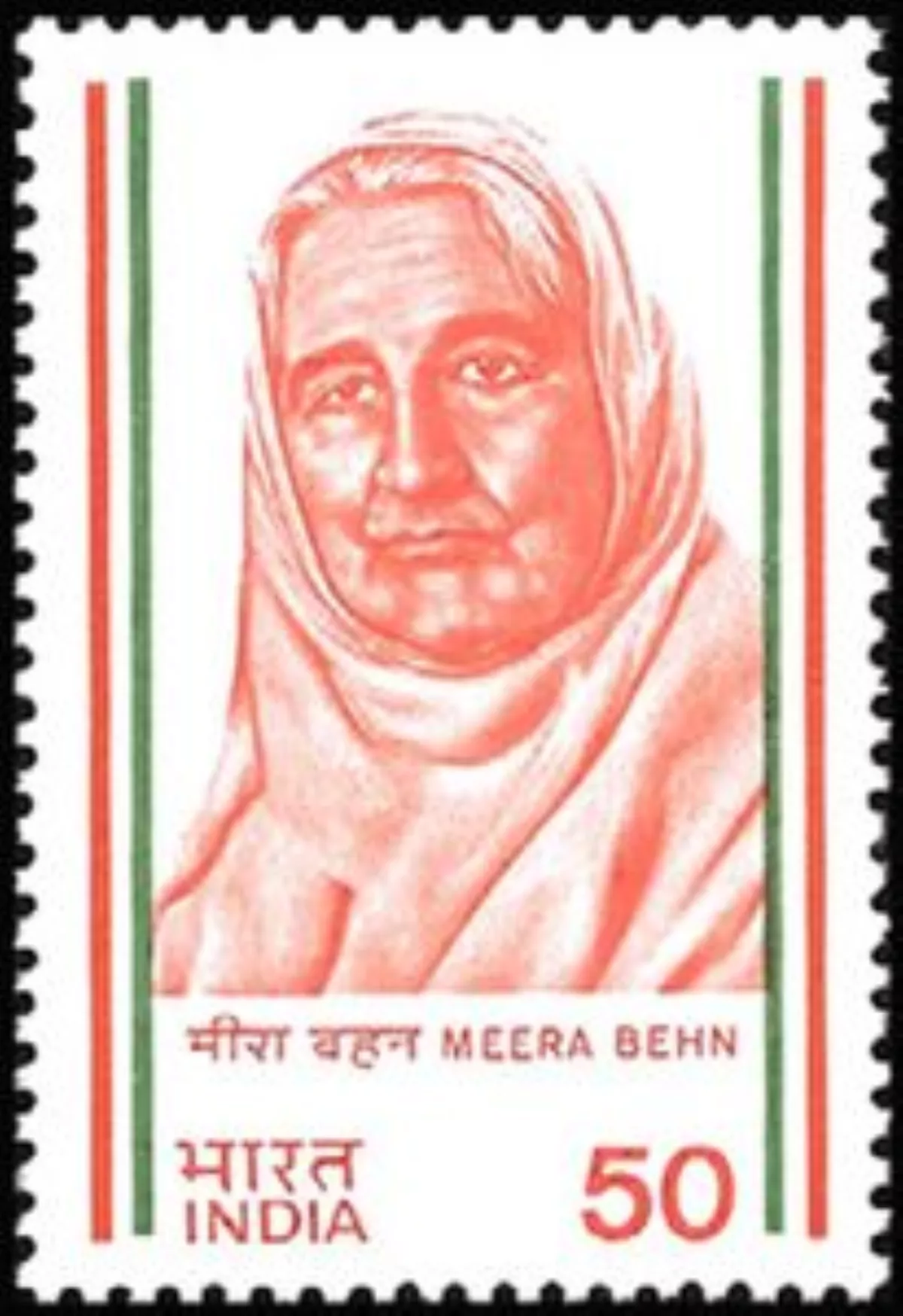 1.
1. Madeleine Slade, known as Mirabehn or Meera Behn, was a British supporter of the Indian Independence Movement who in the 1920s left her home in England to live and work with Mahatma Gandhi.

 1.
1. Madeleine Slade, known as Mirabehn or Meera Behn, was a British supporter of the Indian Independence Movement who in the 1920s left her home in England to live and work with Mahatma Gandhi.
Mirabehn devoted her life to human development and the advancement of Gandhi's principles.
Mirabehn took to the piano and concerts and went on to become a concert manager.
Mirabehn visited Vienna and Germany to see where Beethoven had lived and composed his music and she read about him extensively.
Mirabehn read Romain Rolland's books on Beethoven and later met with him at Villeneuve, where he was living at the time.
Mirabehn then continued training herself for all the demands of an ascetic's life in India, giving up all wine, beer, and spirits, and learning to spin and weave wool.
Mirabehn arrived in Bombay on 6 November 1925, and was met by followers of Gandhi as well as his son, Devdas.
Mirabehn attended her first annual meeting of the Indian National Congress in December 1925.
Mirabehn spent most of 1926 in Sabarmati, where she spun and wove, cooked, and cleaned in the ashram.
Mirabehn spent the early months of 1927 visiting ashrams across North India.
Mirabehn's stay in India coincided with the zenith of the Gandhian phase of the Indian independence movement.
Mirabehn accompanied Gandhi to the Round Table Conference in London in 1931.
Mirabehn then took on the task of preparing weekly reports of who had been arrested, where, and why.
Mirabehn was transferred to Sabarmati Jail in Ahmedabad, where she shared a cell with Kasturba, Gandhi's wife.
Mirabehn spoke in London, Wales, Lancashire, and Newcastle, among other locations.
Mirabehn then travelled to the United States through her contact with Priest John Haynes Holmes, and in her two-week tour she spoke to 22 gatherings, spoke on five radio broadcasts, and met First Lady Eleanor Roosevelt.
Mirabehn took an active interest in the establishment of the Sevagram Ashram, and worked among the people of Orissa to non-violently resist a potential Japanese invasion in the beginning of 1942.
Mirabehn then moved to Pashulok in 1946, at the request of Govind Ballabh Pant, who wanted to involve her in agriculture extension programs.
Mirabehn took to dairying and farming experiments in these ashrams and spent a while in Kashmir.
Mirabehn wrote about it in an essay titled Something Wrong in the Himalaya but her advice was ignored by the Forest Department.
Mirabehn returned to England in 1959, and relocated to Austria in 1960.
Mirabehn's long-time friend, India's Prime Minister Indira Gandhi, whom Mirabehn had known since Gandhi was a child, made sure she was taken care of even while in Austria.
Mirabehn spent 22 years in small villages in the Vienna Woods, where she died in 1982.
Mirabehn was awarded India's second highest civilian honour, the Padma Vibhushan, in 1981.
Mirabehn published Bapu's Letters to Mira and New and Old Gleanings.
Mirabehn drafted a book called Beethoven's Mystical Vision.